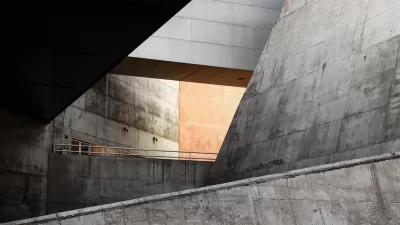The accouterments of modern life are heavily designed, replete with ostensible utility. But here's a radical suggestion: "Perhaps we’re solving the wrong problems — or inventing problems that don’t exist — as justification for our excessive output."
In a compelling editorial, Allison Arieff takes on the pernicious consequences of the "maker"—an invention of the DIY ethos and design savvy of the contemporary zeitgeist. Here's how Arieff describes the maker: "…somewhere in the course of entering the pop culture zeitgeist, the warm and fuzzy self-empowered 'maker' idea got turned into an engine for output and profit. No idea is too superfluous."
The evolution of the maker's design practice, according to Arieff, reflects a blind spot in collective memory: "Not so long ago it felt like we were beginning to recognize that as a society, our patterns of production and consumption were not sustainable…. But that period was short, and the resolve for change it seemed to herald has all but evaporated. While many innovative companies have been focusing on selling experiences rather than manufacturing goods, the drive to produce more has only accelerated."
Although the article focuses more on consumer goods, the argument of the article holds true for all designers, including those who call themselves urban designers. Moreover, the tools of the contemporary maker trade, as described by Arieff, include technologies like 3D printers, which are also changing the game in urban design practices.
FULL STORY: Yes We Can. But Should We?

Alabama: Trump Terminates Settlements for Black Communities Harmed By Raw Sewage
Trump deemed the landmark civil rights agreement “illegal DEI and environmental justice policy.”

Planetizen Federal Action Tracker
A weekly monitor of how Trump’s orders and actions are impacting planners and planning in America.

The 120 Year Old Tiny Home Villages That Sheltered San Francisco’s Earthquake Refugees
More than a century ago, San Francisco mobilized to house thousands of residents displaced by the 1906 earthquake. Could their strategy offer a model for the present?

In Both Crashes and Crime, Public Transportation is Far Safer than Driving
Contrary to popular assumptions, public transportation has far lower crash and crime rates than automobile travel. For safer communities, improve and encourage transit travel.

Report: Zoning Reforms Should Complement Nashville’s Ambitious Transit Plan
Without reform, restrictive zoning codes will limit the impact of the city’s planned transit expansion and could exclude some of the residents who depend on transit the most.

Judge Orders Release of Frozen IRA, IIJA Funding
The decision is a victory for environmental groups who charged that freezing funds for critical infrastructure and disaster response programs caused “real and irreparable harm” to communities.
Urban Design for Planners 1: Software Tools
This six-course series explores essential urban design concepts using open source software and equips planners with the tools they need to participate fully in the urban design process.
Planning for Universal Design
Learn the tools for implementing Universal Design in planning regulations.
Clanton & Associates, Inc.
Jessamine County Fiscal Court
Institute for Housing and Urban Development Studies (IHS)
City of Grandview
Harvard GSD Executive Education
Toledo-Lucas County Plan Commissions
Salt Lake City
NYU Wagner Graduate School of Public Service





























